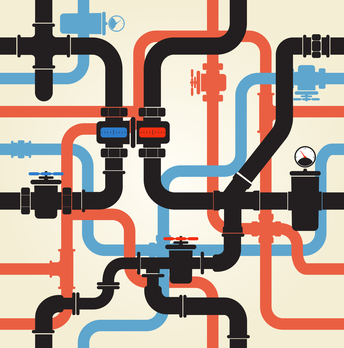Keystone Pipeline Delay Not Affecting Canadian Oil Producers
Keystone Pipeline Delay Not Affecting Canadian Oil Producers
“Keystone is kind of old news,” said Sandy Fielden, Director of Energy Analytics at Austin, Texas-based consulting company RBN Energy. “Producers have moved on and are looking for new capacity from other pipelines.” That’s a quote worth considering. With Keystone XL still years away from even potential completion, it might seem that hopes for Canadian oil exports are caught in limbo. However, nothing could be further from the truth.
Despite six years of delays on the Keystone XL pipeline — which would mimic the existing pipeline between Hardisty, Alberta and Steele City, Nebraska in order to bring bitumen from Alberta to Gulf Coast refineries efficiently — Canadian crude shipments are still projected to climb to more than 400,000 barrels a day next year. That figure is nearly double the current Canadian export rate.
Of course, Keystone’s capacity would provide an even greater increase to the present export rate, but the expanded pipeline would only be a strong addition to an already existing system that is operating successfully.
In fact, Canadian crude exports to Gulf refineries have gone up 83 per cent over the past four years, all while the Keystone XL pipeline has been waiting for the Obama administration’s approval in order to go ahead.
Pipeline Workarounds Abound
Canadian exports to the U.S. have never been higher than they have been in the past few weeks, and the slow progress on the approval of the Keystone XL is not proving to be a stopping block for the industry.
Other large pipelines have become strong alternative options, including the Trans Mountain expansion, Enbridge’s Northern Gateway and TransCanada’s EnergyEast — sometimes touted as Canada’s alternative to the Keystone XL. Additionally, some old Midwest pipelines have even been reversed to bring crude oil to Gulf refineries, rather than bringing refined oil to consumers as they used to.
Canadian oil is being shipped by rail, with increased efficiency and safety as time goes on. In the first half of 2014, Canada was sending 54,000 barrels a day to the Gulf by rail. The main disadvantage to using the rail system, besides it being a slower way to get crude oil to the market, is that there is no systematic oversight or design strategy to guide its development. Keystone would provide a unified method for exporting oil, and providing protection for producers and consumers alike.
The Future of Keystone XL
The American Senate Democrats may have blocked a move to start construction on Keystone XL in mid November, but the pipeline is still in the plans.
When the bill comes up again in the new year, under a Republican-controlled Senate, there is a good chance the bill will pass. However, there remains the chance that President Obama might refuse the pipeline, as he did in 2012.
Even with the President’s historical opposition to the pipeline and other transport measures in place, Canadian oil producers haven’t given up on the project. According to a spokesperson from TransCanada, who owns the potential project, Keystone XL would still be the least expensive way to get Canadian oil down to the Gulf. TransCanada’s clients have maintained their contracts for the use of the pipeline, and the company remains devoted to its plan.
So while Canadian oil transport hasn’t been entirely limited by the long delays on the pipeline, it still remains a much-anticipated project.


